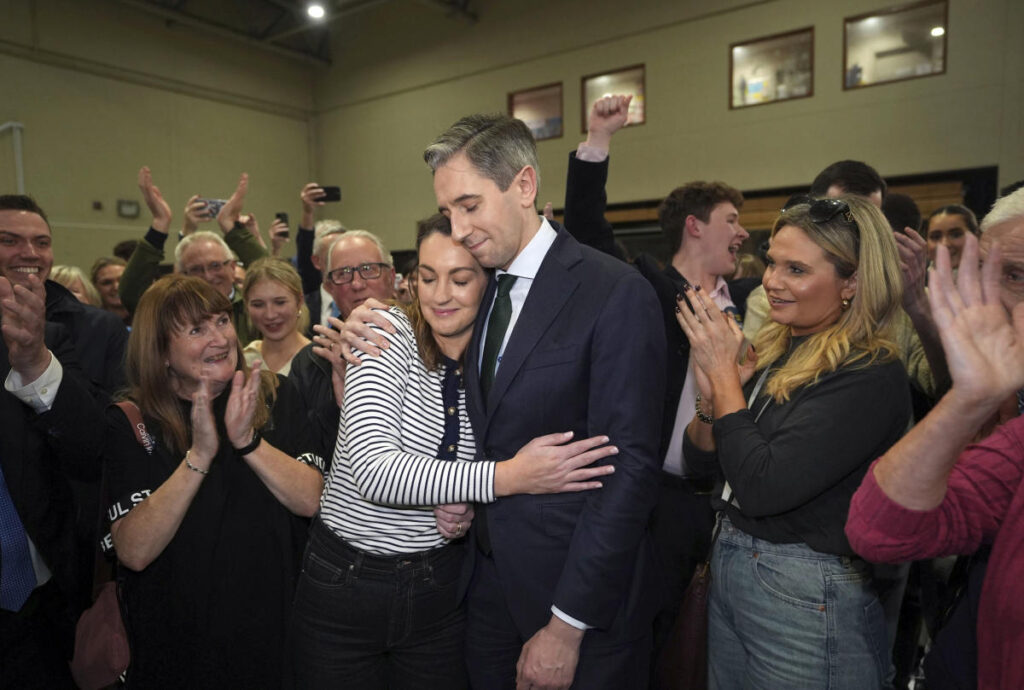In the recent national election in Ireland, the landscape has shifted, with the traditional dominance of the center-right parties Fine Gael and Fianna Fáil now facing challenges due to a fractured voting pattern. As votes are still being counted in the 174-seat Dáil, the lower house of Ireland’s parliament, both incumbent parties are vying for a coalition government. Left-wing party Sinn Féin, which has ambitions to reunify the Republic of Ireland with Northern Ireland, has gained momentum, but finds itself in a precarious position as both Fine Gael and Fianna Fáil refuse to ally with it, primarily due to its historical connections to the Irish Republican Army from the violent conflicts in Northern Ireland.
The electoral process in Ireland employs a proportional representation system that allows voters to rank candidates by preference, complicating and extending the counting process. Outgoing Prime Minister Simon Harris of Fine Gael, alongside Fianna Fáil leader Micheál Martin and Sinn Féin’s Mary Lou McDonald, all maintained their seats amid concerns regarding their parties’ reduced voter base. Harris acknowledged the challenge ahead, stating that understanding the electorate’s message would require time and detailed reflection following the election results.
Key themes emerged prominently during the electoral campaign, especially around the cost of living and a critical housing crisis in Ireland, further complicated by an ongoing discussion around immigration. With Ireland’s population at approximately 5.4 million, these issues resonate significantly, highlighting the societal struggles accompanying economic pressures. Early indications suggested that, unlike many global trends leading to incumbent governments being voted out amid dissatisfaction, Fine Gael and Fianna Fáil may maintain political relevance despite voters’ growing discontent.
The coalition scenario appears to be tenuous due to the deep-seated rivalry and differing historical narratives of Fine Gael and Fianna Fáil, both of which have similar policies yet stem from opposing factions during Ireland’s civil war in the 1920s. In the aftermath of a near-parallel result in the 2020 elections, these parties collaborated, but whether they can replicate such cooperation post-election remains uncertain. Paschal Donohoe, the Fine Gael candidate, noted the election’s primary theme as one of maintaining the center amidst votes flying in multiple directions towards various parties and independent candidates.
As the vote counting progresses, some surprising outcomes, such as the presence of independent candidates, have surfaced, reflecting notable voter shifts. Among these was Gerry “the Monk” Hutch, a figure associated with organized crime who has managed to capture significant support following his legal troubles in Spain. His candidacy is a stark reminder of how elections can take unexpected turns as citizens respond to individual personalities beyond traditional party lines.
The unfolding political scenario emphasizes a shifting Irish electorate that is beginning to challenge the historical hegemony of the center-right parties. The final results and subsequent coalition negotiations will play a crucial role in shaping Ireland’s policy direction in the coming years, particularly concerning pressing social issues and the economic landscape. The need for compromise in coalition talks suggests that the evolving political dynamics may bring about new alliances and policies that respond more directly to the concerns of the Irish populace.

